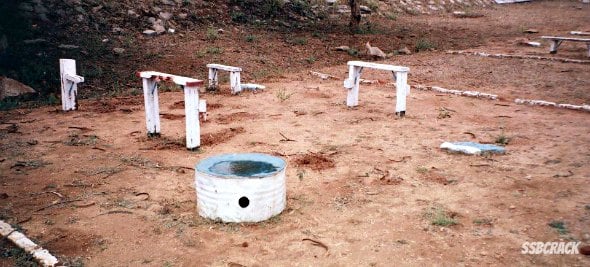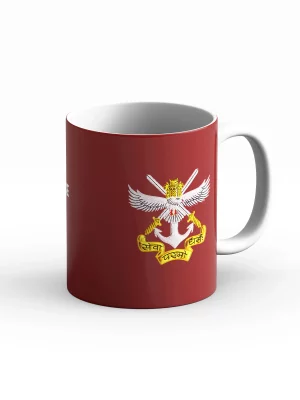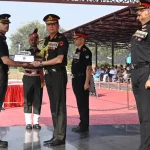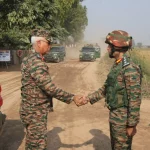The Progressive Group Task (PGT) is an outdoor group exercise that follows the Group Planning Exercise during the Group Testing Officer (GTO) series at the Services Selection Board (SSB).
Known for its unique blend of teamwork, leadership, and problem-solving, the PGT requires a group of candidates to navigate a series of increasingly difficult obstacles under specific rules and constraints. Below is a comprehensive guide on how the PGT unfolds, what to expect, and how to perform effectively.
1. Overview of PGT
- Sequence: The PGT typically comes after the Group Planning Exercise. It is one of the early outdoor tasks in the GTO series.
- Task Nature: A series of physical obstacles laid out in a ground or open space that you must cross from start to finish using prescribed materials.
- Time Allocated: Usually 30–45 minutes for the entire group to complete all levels of obstacles.
- Group Participation: All members of the group participate together. The difficulty level of each obstacle increases progressively from one stage to the next.
2. Helping Materials
The GTO provides each group with the following items to negotiate the obstacles:
- Wooden Log (Balli) – A sturdy piece of wood that can be used as a support or bridge.
- Wooden Plank (Phatta) – A flat board that can be laid across gaps.
- Rope – Useful for tying, pulling, or creating makeshift bridges.
- Fragile Load – An object (often a drum or box) representing a load that you must carefully transport across each obstacle.
You must use these materials judiciously while following the rules outlined by the GTO.
3. Rules of the Progressive Group Task
3.1 Rule of Colors
The obstacle structures are painted in three colors—Red, Yellow, and White—and each color imposes specific restrictions:
- White: Both the candidate and the helping material can be placed or used on white-colored parts.
- Yellow: A candidate can stand on a yellow-colored area, but no helping material can be placed on it.
- Red: Neither the candidate nor the helping material can touch the red-colored sections.
Violating these color rules typically means starting the obstacle again or incurring a penalty, depending on the GTO’s discretion.
3.2 Out of Bounds Area
- Mud Surfaces and other designated sections are out of bounds.
- Any area marked or stated by the GTO as “Out of Bounds” must not be touched by the candidate or the helping material.
3.3 Rule of Rigidity
- Rigid materials (wooden logs, planks) cannot be tied together.
- However, you can tie the helping materials to the obstacle structure itself if needed.
3.4 Rule of Infinity
- The start line and the finish line are deemed to extend infinitely to the left and right.
- You cannot circumvent the obstacle by going around it; you must cross through the structure.
3.5 Rule of Group and Load
- The entire group, including the last person, all helping materials, and the fragile load, must move forward in unison through the entire course.
- You cannot leave anyone or any item behind while moving to the next stage of the obstacle.
3.6 Rule of Distance
- No jumps greater than four feet are permitted.
- Any gap wider than four feet must be bridged using the helping materials.
4. Important Points to Remember
- Do Not Look at the GTO: Maintain focus on your group, the obstacles, and the task.
- Pay Attention to the Briefing: The GTO often provides crucial hints and clarifications during the initial briefing.
- Observe Details: Small notches, hooks, or structural protrusions can give you clues on how to place or tie materials.
- Propose Logical Solutions: The GTO evaluates your problem-solving approach—ensure your ideas make sense and follow the rules.
- Communicate and Cooperate: A friendly, supportive tone helps in maintaining group cohesion.
- Motivate and Support: Encourage group members who are struggling; teamwork is key to success.
5. Tips for Performing Well in PGT
- Plan Quickly but Carefully
- Evaluate the obstacle layout and decide on a feasible approach.
- Don’t rush without thinking, but also avoid overthinking.
- Use Resources Wisely
- Place the wooden plank, log, and rope strategically.
- Ensure you do not violate the Rule of Rigidity or the Color Rule.
- Be Adaptable
- If one plan fails, switch to an alternative without wasting time.
- Remain calm and composed to maintain group morale.
- Foster Teamwork
- Encourage ideas from quieter members.
- Execute the best plan collectively without letting personal ego interfere.
- Maintain Safety and Compliance
- Watch your footing on planks or logs.
- Ensure no one crosses the red or out-of-bounds areas inadvertently.
6. Conclusion
The Progressive Group Task (PGT) is a dynamic, hands-on test of a candidate’s leadership, team coordination, problem-solving abilities, and adaptability under constraints.
By understanding and applying the rules, communicating effectively, and maintaining a supportive team environment, you will maximize your chances of excelling in this critical stage of the GTO series.
Remember, the assessors are not just looking for someone who can solve the puzzle; they want someone who can inspire and coordinate a group effort in challenging conditions.
Also Read











